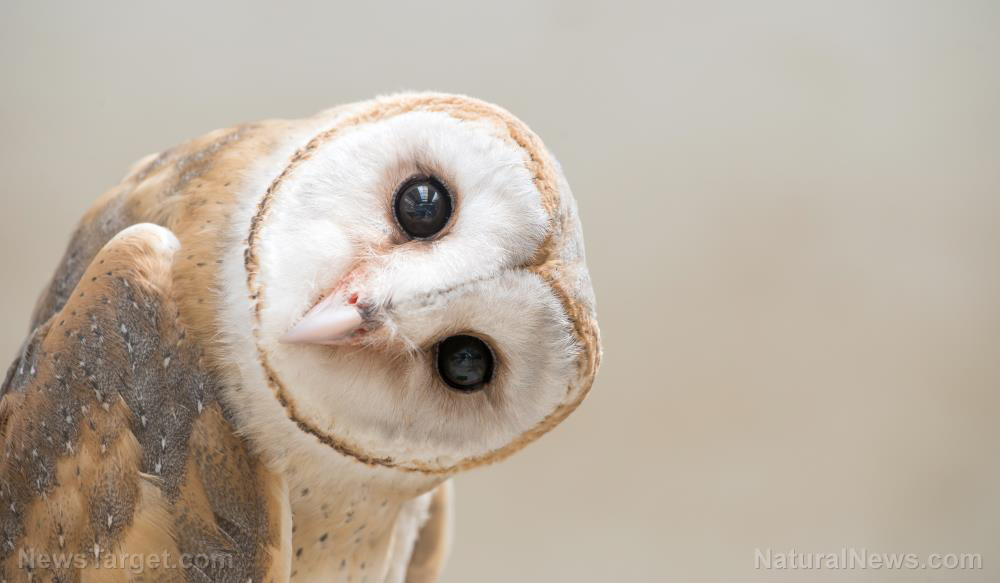 Parler
Parler Gab
Gab
Rare owl species spotted for the second time since 1892
In May 2016, Andy Boyce, then a doctoral candidate at the University of Montana, worked at Sabah, Malaysia, to understand how different bird species behave across various elevations. Boyce was capturing and measuring songbirds when he received a text message from fellow researcher Keegan Tranquillo, who had spotted the bird in the forests of Mount Kinabalu. Tranquillo, now a field biologist at Bandelier National Monument in New Mexico, said the Rajah scops owl had flown out of a dark corner with lots of vegetation. The owl flew away as he was observing it. However, it returned to perch in a shaded area shortly after, a moment Tranquillo said was a stroke of luck. Tranquillo said he could tell it was a Rajah scops owl. However, the bird looked different from the more common Sumatran subspecies because it was larger and had orange eyes. Boyce, now an ecologist at the Smithsonian Migratory Bird Center, said he was overwhelmed when he heard of the sighting. He said he felt "absolute shock and excitement" that they found the mythical bird. But those feelings were quickly replaced by "pure anxiety" as he rushed to document the elusive bird of prey. Boyce feared that the bird could disappear again for who knows how long if he failed to document it in time. "It was a really rapid progression of emotion," added Boyce. There was nervousness and anticipation as he was trying to get to the forest. But there was also some disbelief and a lot of anxiety when he spotted the bird. "Being able to document this vanished bird was really an incredibly exciting moment, and not something I ever really dreamed of," Boyce told Mongabay. He said his work wasn't really focused on exploring remote and little-known places or purposely searching rare and forgotten species. Richard Bowdler Sharpe, an ornithologist with the British Museum in London, first described the rare owl species in 1892. Sharpe, who had named more than 230 bird species and another 200 subspecies in his lifetime, named the bird after James Brooke, Rajah of Sarawak, who ruled parts of Borneo in the 1800s. The Bornean Rajah scops owl is rather small at just four ounces and nine inches tall. But adults can still appear fierce thanks to their furrowed brows, black streaks on their chests and piercing orange eyes. Currently, there are only two known subspecies of the Rajah scops owl: the one documented by Boyce and Otus brookii solokensis. This species has yellow eyes and can be found on the island of Sumatra in Indonesia. Boyce and his colleagues believe that the Bornean Rajah scops owl might represent a distinct species, not just a subspecies. But with only two sightings to work with, scientists still know next to nothing about the Bornean Rajah scops owl, including its population size, reproductive habits, songs or vocalizations. Scientists are also uncertain about its core habitat. But even if they knew where to look, the owl's nocturnal tendencies will make it hard to spot. Because the owl has never been captured, scientists haven't been able to conduct long-term observational studies about the animal or collect blood samples for genetic analysis. Boyce thinks the Bornean Rajah scops owl hasn't been seen in more than a century because its population density is low. The International Union for Conservation of Nature (IUCN) has rated the Bornean Rajah scops owl a species of "least concern." However, Boyce said the rating is premature. To protect the bird, scientists need a firm understanding of its habitat and ecology. "[We] can't conserve what we don't know exists." (Related: Endangered reptile species being sold as pets could be in danger of extinction, warn scientists.) Read more articles about sightings of other rare species at Discoveries.news. Sources include: DailyMail.co.uk News.Mongabay.comSupplementing with vitamin D found to improve blood pressure in overweight children
By Zoey Sky // Share
IRONY: “Green” solar energy creating massive landfill waste problem in California
By Ethan Huff // Share
Qatari study finds natural immunity is 97% EFFECTIVE against severe COVID even after 14 months
By Ramon Tomey // Share





